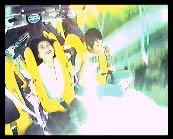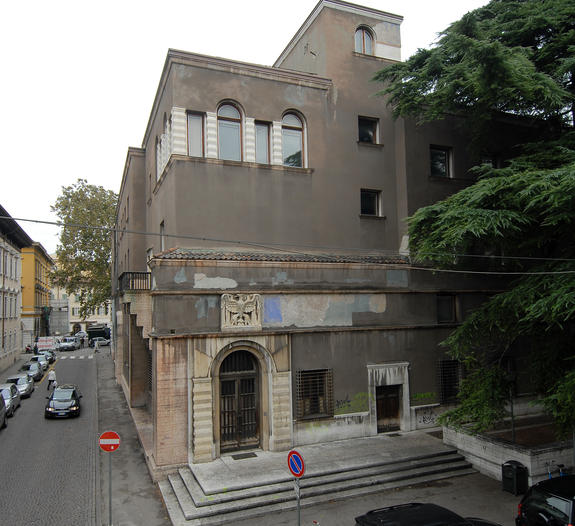
- Activate, Actuate:
- Adam Leech
- Adriana Cavarero
- Adrien Tirtiaux
- Alexander Vaindorf
- ALTERAZIONI VIDEO
- Althea Thauberger
- Anawana Haloba in collaboration with Francesca Grilli
- Anders Kreuger
- Andreas Duscha
- Andreas Müller with David Bennewith
- Andree Korpys and Markus Löffler
- Angela Melitopoulos
- Anna Faroqhi
- Anna Witt
- Anne-Mie Van Kerckhoven
- Ant Hampton
- Arundhati Roy
- Attila Bruni
- Auditory Epode
- Azra Aksamija
- Barbara Visser
- Barbora Klimova
- Bernadette Corporation
- Bernd Ribbeck
- Beth Campbell
- Brave New Alps
- BURGHARD
- Büro für kognitiven urbanismus/Office for cognitive urbanism
- CandidaTV
- Charles Lim Li Yong
- Christian Mayer
- Christian Philipp Müller
- Christoph Ruckhäberle
- Claire Fontaine
- contemporary culture indexBased in San Francisco, US
- Danh Vo
- Daniel Knorr
- Daria Martin
- Darius Ziura
- David Adjaye
- Dayanita Singh
- Deborah Ligorio
- Didier Fiuza Faustino
- Emre Hüner
- etoy.CORPORATION
- Eveli¯na Deicˇmane
- Ewa Partum
- Eyal Sivan
- Eyal Weizman
- Famed
- Francesco Gennari
- Gianluca and Massimiliano De Serio
- Gianni Pettena
- Glen Neath
- Graham Harwood
- Graham Harwood, Richard Wright and Matsuko Yokokoji
- Guido van der Werve
- Hannes Hoelzl
- Hansa Thapliyal
- Harold de Bree
- Heide Hinrichs
- Heidrun Holzfeind
- Hélène Binet
- Hiwa K.
- I. Helen Jilavu
- Igor Eškinja
- Ivana Franke
- Jaime Pitarch
- Janek Simon
- Javier Tellez
- Joachim Koester
- João Maria Gusmão + Pedro Paiva
- Johannes Vogl
- Jorge Otero-Pailos
- Jörgen Svensson
- Jos De Gruyter and Harald Thys
- Josef Strau
- Judi Werthein
- Kamen Stoyanov
- Karl Holmqvist
- KateRˇina Šedá
- Keren Cytter
- Klaus Weber
- Knut Åsdam
- Kristina Bræin
- Latifa Echakhch
- Lawrence Liang
- Libia Castro & Ólafur Ólafsson
- Luca Trevisani
- Luigi Ontani
- m-city
- manifeSTATION
- Marcos Chaves
- Marcus Coates
- Margareth Obexer
- Margrét H. Blöndal
- Martin Pichlmair
- Martino Gamper
- MATTER OF FACT
- Matthew Fuller
- Mazzoni’s Trento Palace: To the Return of Color
- Meg Stuart
- Melati Suryodarmo
- Michał Budny
- Michelangelo Antonioni
- Miklós Erhardt and Little Warsaw
- Miks Mitrevics
- Mladen Dolar
- Mobile Academy, Hannah Hurtzig, Chris Kondek, in collaboration with Karin Harrasser
- Nader Ahriman
- Natascha Sadr Haghighian
- Neil Cummings & Marysia Lewandowska
- Nico Vascellari
- Nikolaus Hirsch & Michel Müller
- Nina Canell
- Omer Fast
- Oskar Dawicki
- Pamela Rosenkranz
- Peter Coffin
- Peter Friedl
- Philippe Rahm
- Philippe Rahm
- Pietro Roccasalva
- Piratbyrån (The Bureau of Piracy)
- Professor Bad Trip (Gianluca Lerici)
- Rä di Martino
- Rabih Mroué
- RADIO PAPESSE
- Ragnar Kjartansson
- Ranu Ghosh
- Reinhard Kropf & Siv Helene Stangeland
- Renée Green
- Ria Pacquée
- Ricardo Jacinto
- Riccardo Previdi
- Roee Rosen
- Rosalind Nashashibi
- Runa Islam
- Rupali Gupte & Prasad Shetty
- Saadi Yousef
- Sanjay Kak
- Saskia Sassen
- Shahid Amin
- Social Art Praxis
- Sonia Leimer
- Stefano Bernardi
- Stephen Willats
- TABULA RASA
- Tamy Ben-Tor
- Tatiana Trouvé
- Teresa Margolles
- TEUFELSgroup
- The Museum for Franco Basaglia
- The Museum of European Normality
- the Museum of Learning Things
- The Museum of projective personality Testing
- the Museum of the Stealing of Souls
- Thomas Meinecke
- Tim Etchells
- Timo Kahlen
- Tom Holert with Claudia Honecker
- Uqbar Foundation
- Valérie Mréjen
- Walter Niedermayr
- Xisco Mensua
- Yane Calovski
- Zilvinas Kempinas
- ZimmerFrei
- __fabrics interseason

künstler
Angela Melitopoulos
1961, Munich, DE Lives in Cologne, DE
The Language of Things / Die Sprache der Dinge, 2007 Video, 33’
TRIENT

„Es gibt kein Geschehen oder Ding“, so schrieb Walter Benjamin im Jahr 1916, „das nicht in gewisser Weise an der Sprache teilhätte, denn es ist jedem wesentlich, seinen geistigen Inhalt mitzuteilen.“ Angela Melitopoulos’ Video-Essay Die Sprache der Dinge ist in entscheidenden Momenten mit Zitaten aus Benjamins Über Sprache überhaupt und über die Sprache des Menschen untertitelt. Stumm gesprochen erscheinen sie über den Darstellungen präzis kalibrierter Maschinerie – Karusselle, Wellenbäder und andere Apparate, die den Rausch der Geschwindigkeit ermöglichen – aus Tokios künstlichen Welten und High-Tech-Vergnügungsparks. Dinge, so Benjamin, haben eine stumme und rudimentäre Form der Sprache, sie kommunizieren mittels einer „materiellen Gemeinsamkeit“ miteinander. Diese Verbindung ist unmittelbar und magisch. Nur durch die Mitteilung von Dingen kann die Welt als ein Ganzes verstanden werden. Durch die Anwendung einer der Sprache von Technologie können die Besucher eines Vergnügungsparks sich selbst in Ekstase versetzen. Für eine Millisekunde setzt die Schwerkraft aus, und die Geschwindigkeit erzeugt pures Glück. Selbst das Videobild zerreißt. Die Technologien dieses Vergnügens sind nicht-sprachliche Effekte einer kalkulierenden Sprache der Bezeichnung: die Sprache der Menschen, die das Vokabular physikalischer Bezeichnungen beinhaltet, führt zur technischem Wissen und der Kalkulierbarkeit von Affekten. In diesem Sinne drückt die Sprache der Dinge mittels der Technologie eine Art von Gemeinsamkeit aus, durch die sich die Welt als ein ungeteiltes Ganzes begreift.
Location
TRIENT
ANSELM FRANKE/HILA PELEG: "THE SOUL (or, Much Trouble in the Transportation of Souls)"
PALAZZO DELLE POSTE, VIA S.S. TRINITA’ 27, I-38100 TRIENT, ITALIEN
mehr